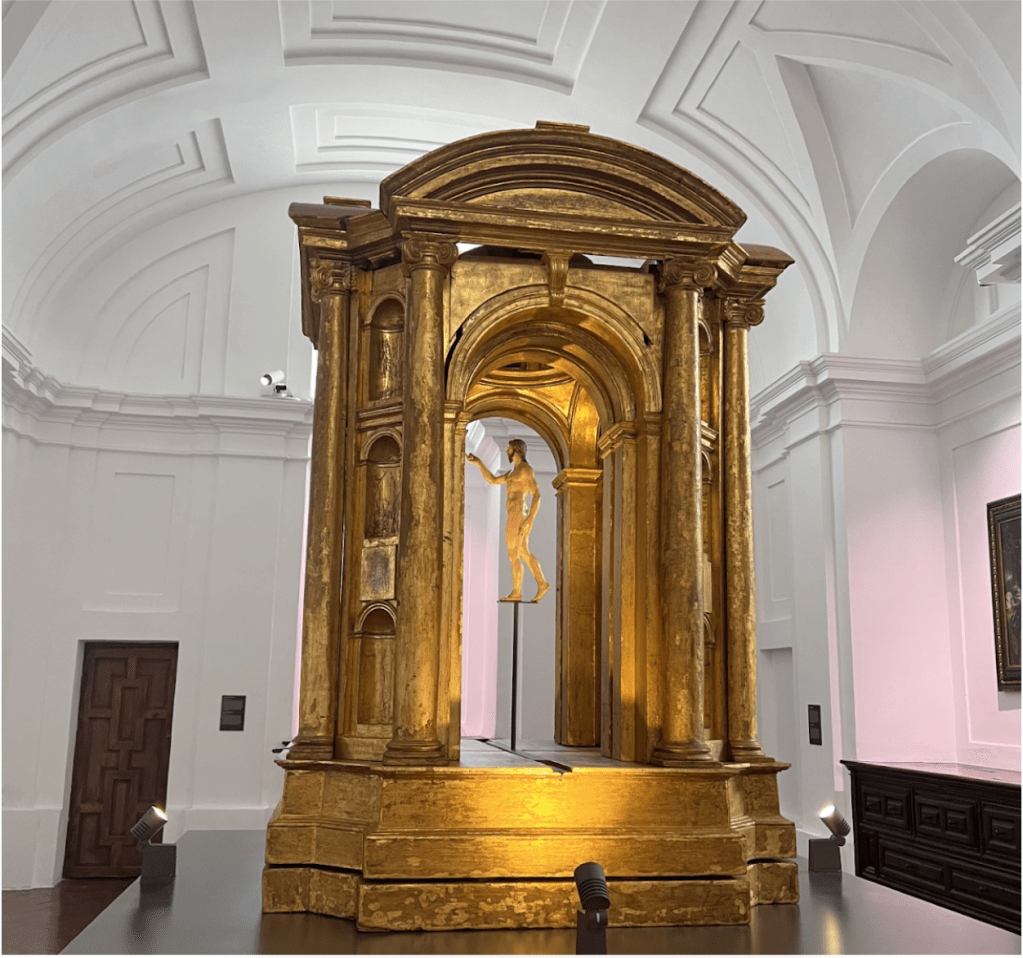ARTES is delighted to share Megan Smith’s report of her research trip, funded by the CEEH/ARTES Travel Scholarship.
Thanks to the generous funding of the ARTES-CEEH Travel Scholarship, I was able to travel to several sites in Spain in late March-early April of this year to carry out research for my undergraduate dissertation, which focuses on the work of the Factum Foundation in Bishop Auckland’s Spanish Gallery.

The Factum Foundation uses non-contact scanning, modelling and printing technologies to produce facsimiles of artworks and artefacts across the globe, an invaluable resource in digital preservation and conservation. Since 2009, Factum have worked to digitally archive objects of significance in cultural heritage, and have produced high-spec facsimiles of a number of these objects for display in institutions on an international scale. For the Spanish Gallery, Factum have produced a full-facsimile exhibition of Spanish Baroque and Renaissance painting, sculpture and architectural elements, producing not only the artworks on immediately obvious display but also the floors, ceilings and wall mouldings, borrowed from several sites in Spain. The scholarship funding meant that I was able to visit the sites where the original works remain in their original contexts, to better understand the differences between them and their facsimile counterparts. In particular it was the display of these artworks which I wanted to investigate, which is very difficult to do without visiting the institutions in person to see how the original displays may differ from the gallery setting in which we find the facsimiles.
The tracing of these artworks began at the Hospital de San Juan Bautista (known as the Hospital de Tavera) in Toledo, where several works by El Greco and Alonso Berruguete recreated by Factum for the Spanish Gallery exhibition can be found. El Greco’s ‘Risen Christ’ tabernacle is perhaps one of the most interesting works from this collection, as Factum have rematerialised the missing top section of the structure by digitally modelling a new design based on a pre-Civil War photograph. In partnership with the Hospital, Factum also recreated the sepulchre and death mask of Cardinal Tavera, along with El Greco’s portrait of the Cardinal, and the much larger El Greco ‘Baptism of Christ’ painting from the side altarpiece. The display of this panel in the chapel of the Hospital is in great contrast with that of the Spanish Gallery facsimile, which opens up a discussion of how the use of facsimiles in this gallery space may offer visitors a new viewing experience.
From Toledo I travelled to Madrid, where I had the opportunity to visit the Factum Foundation workshop. This was without a doubt the highlight of my trip. I had the opportunity to speak to Carlos Bayod, who worked on the Spanish Gallery display, which helped me gain insight on how the curation of the exhibition developed and the importance of the digital preservation aspect. Each step of the facsimile process has a dedicated team and workshop, and it was particularly interesting to see precisely how an artwork goes from a collection of photographs and scans to a fully rematerialised object, identical to the original piece. I would like to specifically thank Larissa van Moorsel, who facilitated my tour of the workshop, for her wealth of knowledge on the detail of Factum’s work.
From Madrid I travelled to Seville, where I first visited the Casa de Pilatos. Like the Hospital de Tavera, the Casa de Pilatos is part of the Fundación Medinaceli. Factum scanned and reproduced ceramic tiles from the patios, alongside some of the surrounding plasterwork yeserías, and a fourth-century statuette of The Good Shepherd, the facsimiles of which are part of the Spanish Gallery exhibition. The facsimile tiles are a particularly noted visitor highlight of the Spanish Gallery display, and their recording and reproduction is especially significant as the original tiles are beginning to become damaged due to rising ground moisture causing the walls to curve outwards. As with the artworks in the Hospital de Tavera, it was interesting to consider the differences between the Casa de Pilatos and the display of its artworks and architectural elements in the Spanish Gallery exhibition.

My final stop was the church of the Hermandad de la Santa Caridad, also in Seville, where two works by Juan de Valdés Leal and two remaining works of an original series of six by Murillo can be found, all replicated for the Spanish Gallery. When seen in its intended compositional context in the chapel, a carefully designed iconographic program becomes clear which represents the Caridad’s philosophy of charity as salvation: the two vanitas paintings by Juan de Valdés Leal, In Ictu Oculi and Finis Gloriae Mundi, work in synthesis with the accompanying series of paintings by Murillo, which represents the Acts of Charity in the Catholic tradition. To understand this messaging, the paintings must be seen as they were originally commissioned; however in the Spanish Gallery, they are separated into different floors of the building, which naturally alters their iconographic significance in their new, isolated positions. This was the biggest difference between the original context and gallery display I noted whilst visiting these sites, and I found that it was this site which clarified the significance of this research the most.
The funding from the ARTES-CEEH scholarship made this research – and my dissertation- possible, and I am hugely grateful to both organisations for this opportunity! I would also like to extend my gratitude to the team at Factum Foundation, who provided me with every resource possible to carry out this research.

